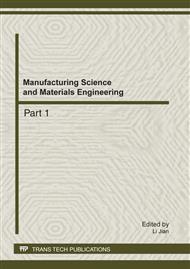p.424
p.430
p.437
p.442
p.447
p.452
p.459
p.464
p.471
Infrared Object Tracking Algorithm Based on Online AdaBoost
Abstract:
An online AdaBoost based tracking algorithm in FLIR imagery is proposed, where tracking is formulated as a binary classification problem. The object features are selected adaptively via online boosting. And then, a strong classifier is built on the weak classifiers. The confidence map of consecutive image frame is created by the strong classifier. The object localization is realized by detecting maximum of the confidence map using mean shift. The weak classfiers are updated according to the new samples to improve the discriminative ability to the object appearance and complex scene. Experiment results verify the effectives and robustness of this tracking algorithm which can improve the tracking performance efficiently.
Info:
Periodical:
Pages:
447-451
Citation:
Online since:
January 2012
Authors:
Keywords:
Price:
Сopyright:
© 2012 Trans Tech Publications Ltd. All Rights Reserved
Share:
Citation:


